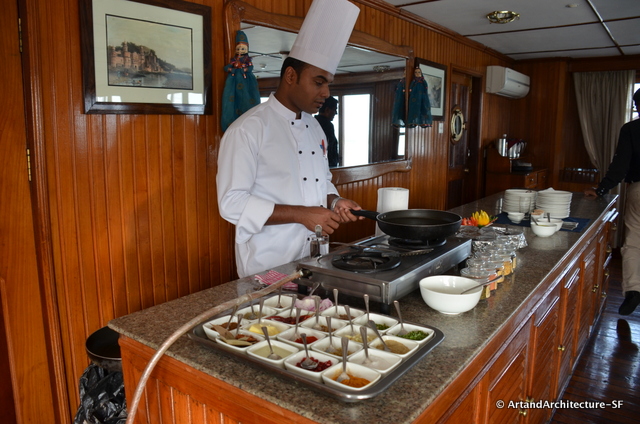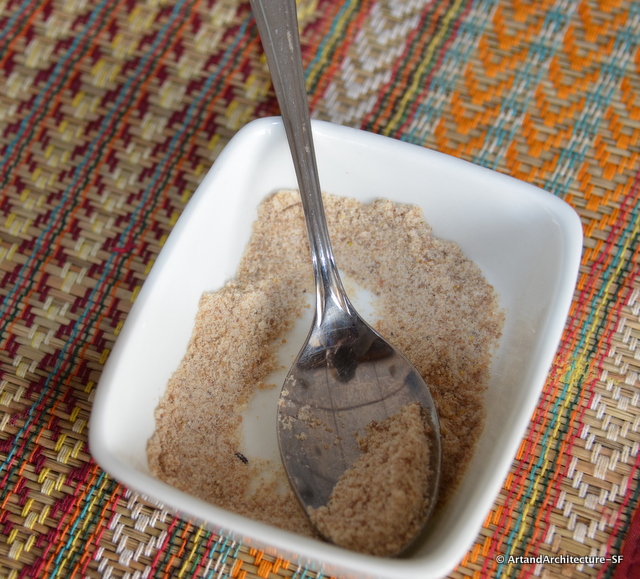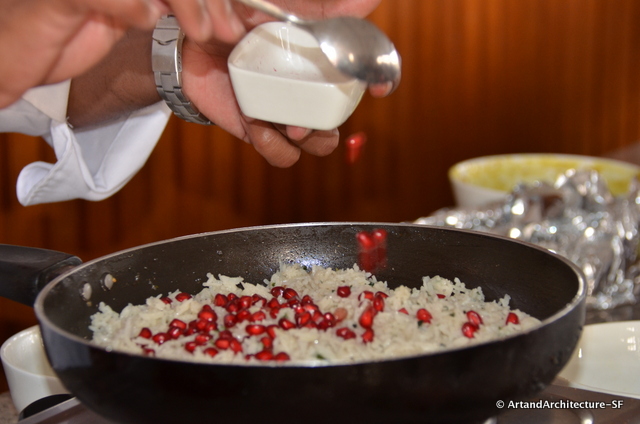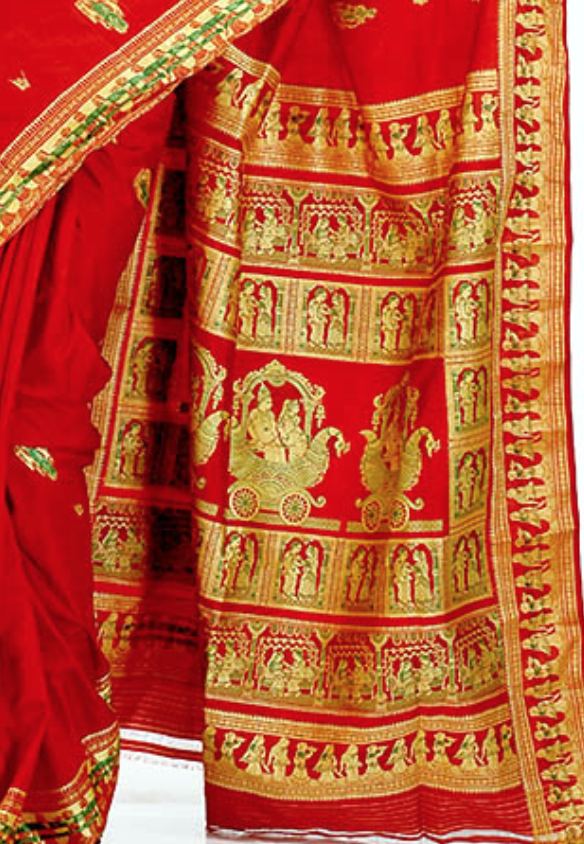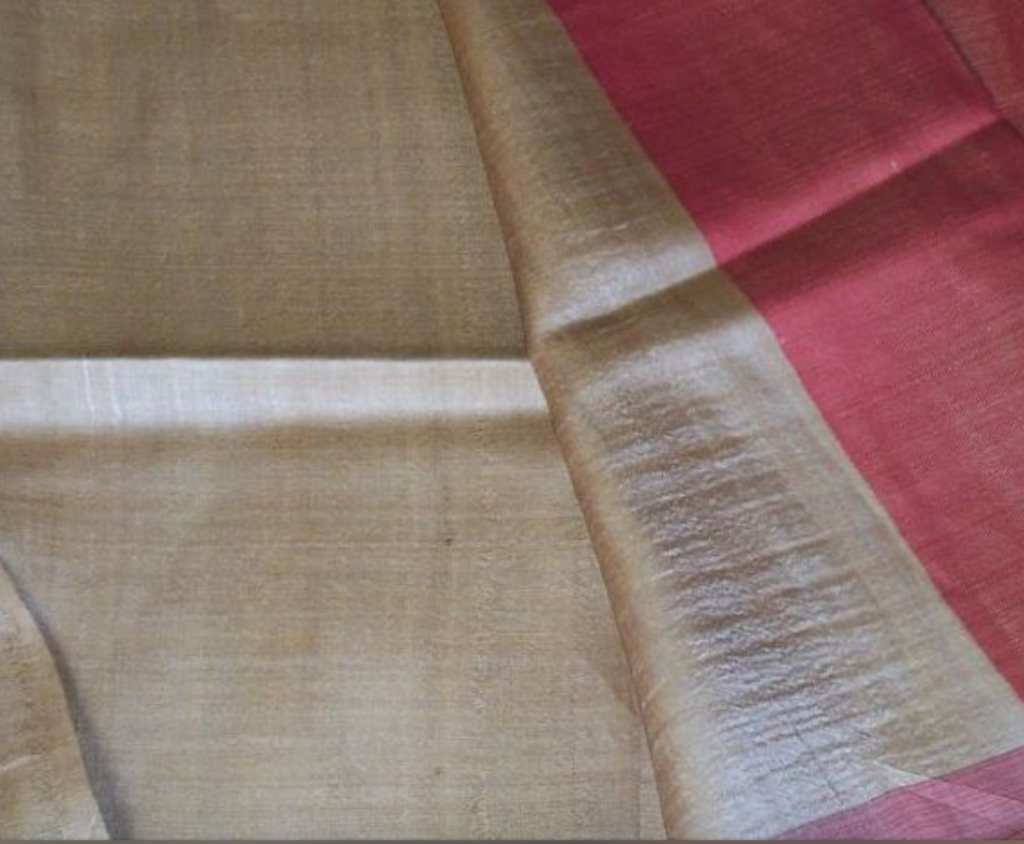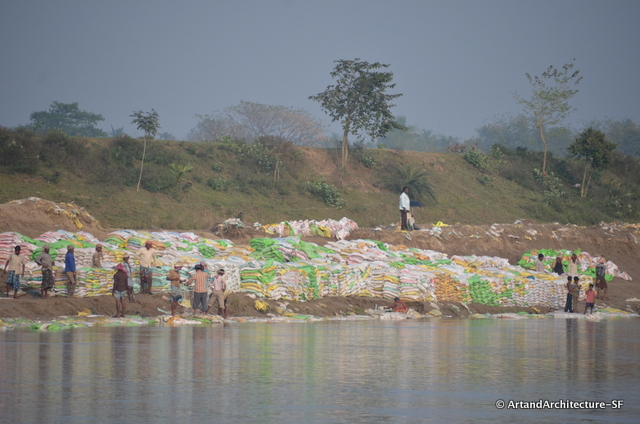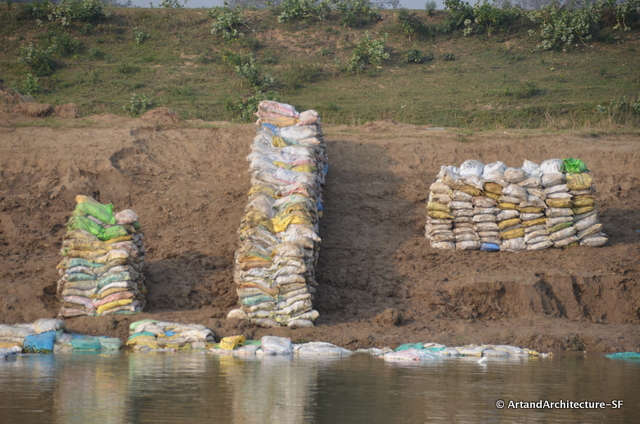February 2015
Our last day on the boat held a cooking class by the chef. It was not so much to get recipes as to get a view into the complicated concept of the Indian kitchen.
There is absolutely no prepared food in India, you want spaghetti sauce, you make it from scratch. Every dish takes hours of preparation. The chef brought much of the items to the table ready to be spiced and fried. You know it is Indian food if it is fried!
The biggest thing I took away from this was how beautiful the food is when freshly prepared, and the spice Hing or asafetida. It was a completely new ingredient to me. It is the gum of a resinous plant with a garlicky taste. I have been reading Curry – A Tale of Cooks and Conquerors while on this trip. Here is an excerpt from the book – “Hing became popular with the Indian vegetarian population. When it was cooked in oil it took on a garlicky flavor that made it a good substitute for onions and garlic, which were avoided by devout Hindus. Asafetida was also known for its digestive properties and was therefore compatible with the vegetarian staple of pulses and beans that are difficult to digest. European visitors to Muhal India complained that the Indians ate so much hing that it made the smell odiously.” A little goes a long way.
We had a lecture from our accompanying professor Dr. Annapurna Garimella on saris of the region. Considering there is a 276 page, $50 dollar book on Sari’s, her one hour lecture was just a drop in the bucket, but here is some of the information.
There are a minimum of 20 different Sari traditions just in the territory we covered on this trip. Historically preparing the yarn was woman’s work and the weaving was mens work. During the Mughal court time embroidery was also done by men because menstruating women could have nothing to do with anything regarding the gods.
Within India there are approximately 354 different types of hand loomed Saris and the weaving industry is the second largest industry in India.
Varanasi is known for its silk brocades. The brocade is introduced not as a supporting weave but as a decoration within the weave. In Varanasi, Badi Bazaar which is the largest area of textile selling in the area, takes in over $1million per DAY.
The Varanasi area produces a few different types of patterns. Kinkhab (little dream) is made up of tiny flowers. This is where the paisley came from, the large paisley in the pattern is called a mango.
Shikargarh (The Hunting)obviously consists of hunting scenes, and Beldar (creeping vine).
Ghagalpur Silk is essentially raw silk. The area employs over 30,000 weavers on 25,000 looms and brings in over $1billion rupees per year. These silks are made from the Antherea moth. You do not have to kill the moth to get at the silk so this type of silk is called Peace Silk.
The Rashidabad area produces Baluchari Sari. These are silk in only 1 or 2 colors, and sometimes the addition of gold. The patterns mimic the patterns found in the terra cotta temples of the area.
The last area on our journey is the Dhaka area and the Jamdani Sari comes from here. This is a Mughul era textile of very, very thin muslin. This type of weaving was declared an Intangible Cultural Heritage by UNESCO. The background is all white and the color is introduced by the use of bamboo needles.
Finally, the end of the Sari is extremely important. This is the point where the wearer engages with the world, and it is a very personal portion of the sari.
The design and style of wearing the Sari has evolved with the times. It has stayed popular due to the fact that it keeps up.
I just wanted to mention an oddity, plastic bags filled with sand and the Sisyphean situation on the Ganges. These bags are just that, sand bags, and they are placed along the banks to attempt to stop erosion.
*
